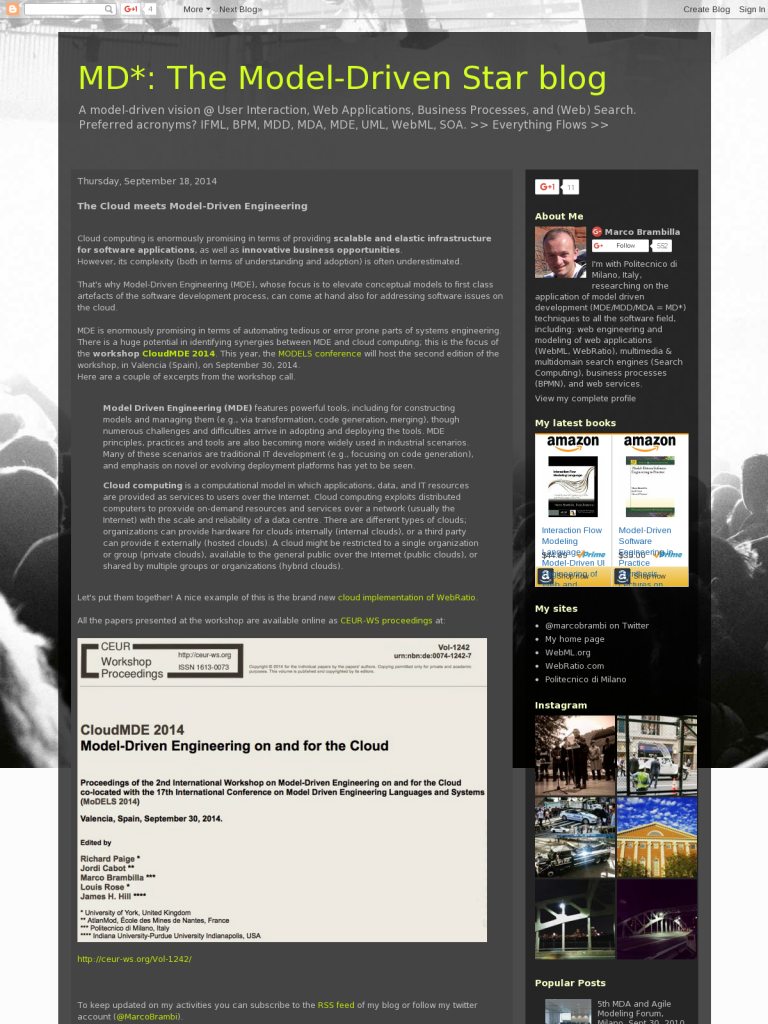The Cloud meets Model-Driven Engineering
Cloud computing is enormously promising in terms of providing scalable and elastic infrastructure for software applications, as well as innovative business opportunities.
Model Driven Engineering (MDE) features powerful tools, including for constructing models and managing them (e.g., via transformation, code generation, merging), though numerous challenges and difficulties arrive in adopting and deploying the tools. MDE principles, practices and tools are also becoming more widely used in industrial scenarios. Many of these scenarios are traditional IT development (e.g., focusing on code generation), and emphasis on novel or evolving deployment platforms has yet to be seen.
Cloud computing is a computational model in which applications, data, and IT resources are provided as services to users over the Internet. Cloud computing exploits distributed computers to proxvide on-demand resources and services over a network (usually the Internet) with the scale and reliability of a data centre. There are different types of clouds; organizations can provide hardware for clouds internally (internal clouds), or a third party can provide it externally (hosted clouds). A cloud might be restricted to a single organization or group (private clouds), available to the general public over the Internet (public clouds), or shared by multiple groups or organizations (hybrid clouds).
Let’s put them together! A nice example of this is the brand new cloud implementation of WebRatio.
To keep updated on my activities you can subscribe to the RSS feed of my blog or follow my twitter account (@MarcoBrambi).
Leave a Comment
You must be logged in to post a comment.








